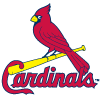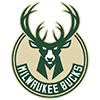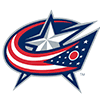Playing Time and Hitter Dollar Values
Projecting a player's value includes two major components - projecting a player's skills, and projecting his playing time. When we do our projections and dollar values, a common response we get is that I have a particular player, usually one that has well above-average skills, ranked too low. In most of those cases, it's because I have him projected to miss more than a handful of games. Usually that projection is because a player has missed a good chunk of games in multiple seasons prior to this one, or in some cases because they have a pre-existing injury. My belief is that most people underestimate the effect of those missed games.
It's readily apparent to see that problem with counting stats. Fewer games equal fewer homers, stolen bases, runs and RBI. But as RotoWire colleague Charlie Zegers demonstrated last week, there's also a good multiplying effect with ratio categories like batting average as well. Not all .300 batting averages are created equal. We have Allen Craig projected to hit .308 this year, and Shin-Soo Choo to hit .293. But because Shoo is projected to get 552 at-bats and Craig just 321, Choo actually gives his fantasy owners more value in the batting average category in a standard 12-team mixed league.
The cumulative effect is also understated. To give you an example, I recently upgraded Ryan Howard's projection on the basis of positive news on his rehab from his torn Achilles' tendon. Initially, I took an extremely conservative position on him (though given how out of line it was with others' projections, perhaps I was the aggressive one - maybe "cautious" was a more apt term than "conservative".), projecting him to miss roughly half the season. It seems now that his return will occur roughly sometime in May, so I've given him 30 more games in his projection, from 75 to 105. Let's look at the change in the results:
| G | AB | AVG | R | HR | RBI | SB | $value | |
| Before | 75 | 282 | .266 | 44 | 17 | 59 | 0 | -$3.48 |
| After | 105 | 395 | .266 | 62 | 24 | 83 | 0 | $5.36 |
It's a pretty extreme change in his value. More often than not, any adjustments I make to a player's projected playing time will not be so extreme - in Howard's case, he received a 40 percent increase in playing time, leading to a dollar value change in nearly $8. But it illustrates how much of a swing there can be.
Here's the problem with this exercise. Projections are notoriously difficult to accurately project to begin with from a skills standpoint, because even when we break them down at the component level (batting eye, power, speed), the output doesn't necessarily translate for our game. We can get a player's OPS nearly down cold, but if he gets 10 fewer homers and 20 more doubles than we expect, that isn't necessarily a great projection for your fantasy purposes. Adding in the playing time aspect is another level of alchemy. Some players have existing injuries, and of course we have injury and playing time histories, but even then, enough fluke injuries hit to create a high error rate. Yet as we progress through spring training, the difference in drafting one player against another often hinges upon that playing time projection. I tend to believe it would be irresponsible not to discount certain players like Josh Hamilton or Nelson Cruz on the basis of their respective injury histories.
To that end, we'll also keep adjusting out projections throughout spring training, as job battles and health statuses come into clearer focus. Once we know a player's role and his progress in recovering from injury, we can get a slightly clearer picture of what might happen during the regular season. For a good start on what battles we're paying attention to, please check out Brian Pelowski's Job Battles article. But don't expect wholesale changes in our projections for many of those job battle resolutions - a decision made on March 25th can quickly get reversed on April 25th.
To account for the uncertainty in this exercise, I wanted to come up with a "per at-bat" set of rankings - what might happen if we projected equal plate appearances for every hitter. Obviously that won't happen in real life, and moreover, not every player would improve linearly with more playing time. Platoon players (often, but not always) are platoon players for a reason. The idea here is that we might see some chances to find value - a player that otherwise doesn't rank high but shows up on the second list could be a nice endgame pick. Further, if you disagree that a certain star should be discounted because of his injury potential, you can see how he might slot with a full projection. To do this, I'm using his Standings Gain Points as my unit of measure - that's the starting point for my dollar values. The actual equation is (Total Standings Gain Points / At-Bats) x 100 - basically, I wanted to move out the decimal point two places to make it a little more decipherable. This was done for standard 12-team mixed auction leagues, with a 60-40 hitting/pitching split as the starting point. I'm listing the top 76 hitters (76, because the 76th player, Domonic Brown, is an interesting illustration.). I highly encourage you to do this exercise on your own and go deeper - spending some time playing with the numbers can lead to other discoveries.
Playing Time Neutral Rankings
| Rank | firstname | lastname | pos | VALUE | PerAB |
| 1 | Matt | Kemp | OF | $39 | 4.631 |
| 2 | Carlos | Gonzalez | OF | $31 | 4.434 |
| 3 | Jose | Bautista | 3B | $27 | 4.325 |
| 4 | Albert | Pujols | 1B | $32 | 4.315 |
| 5 | Ryan | Braun | OF | $14 | 4.307 |
| 6 | Miguel | Cabrera | 1B | $30 | 4.210 |
| 7 | Justin | Upton | OF | $30 | 4.154 |
| 8 | Hanley | Ramirez | SS | $24 | 4.007 |
| 9 | Jacoby | Ellsbury | OF | $32 | 3.963 |
| 10 | Joey | Votto | 1B | $28 | 3.956 |
| 11 | Troy | Tulowitzki | SS | $26 | 3.952 |
| 12 | Curtis | Granderson | OF | $24 | 3.904 |
| 13 | Evan | Longoria | 3B | $26 | 3.882 |
| 14 | Josh | Hamilton | OF | $19 | 3.868 |
| 15 | Mike | Trout | OF | $2 | 3.793 |
| 16 | Desmond | Jennings | OF | $21 | 3.753 |
| 17 | Nelson | Cruz | OF | $17 | 3.742 |
| 18 | Brent | Lillibridge | OF | -$4 | 3.704 |
| 19 | Allen | Craig | OF | $2 | 3.684 |
| 20 | David | Wright | 3B | $21 | 3.668 |
| 21 | Shin-Soo | Choo | OF | $21 | 3.668 |
| 22 | Adrian | Beltre | 3B | $18 | 3.664 |
| 23 | Mike | Stanton | OF | $21 | 3.661 |
| 24 | Prince | Fielder | 1B | $24 | 3.652 |
| 25 | Andrew | McCutchen | OF | $23 | 3.644 |
| 26 | B.J. | Upton | OF | $21 | 3.620 |
| 27 | Brett | Lawrie | 3B | $22 | 3.604 |
| 28 | Mike | Napoli | C | $17 | 3.586 |
| 29 | Robinson | Cano | 2B | $26 | 3.554 |
| 30 | Adrian | Gonzalez | 1B | $24 | 3.551 |
| 31 | Brandon | Belt | 1B | $5 | 3.550 |
| 32 | Matt | Holliday | OF | $19 | 3.545 |
| 33 | Alex | Rodriguez | 3B | $13 | 3.545 |
| 34 | Alex | Gordon | OF | $20 | 3.531 |
| 35 | Ian | Kinsler | 2B | $22 | 3.521 |
| 36 | Paul | Goldschmidt | 1B | $11 | 3.505 |
| 37 | Paul | Konerko | 1B | $18 | 3.488 |
| 38 | Brett | Gardner | OF | $13 | 3.487 |
| 39 | Craig | Gentry | OF | -$9 | 3.467 |
| 40 | Coco | Crisp | OF | $12 | 3.466 |
| 41 | Aramis | Ramirez | 3B | $15 | 3.445 |
| 42 | Jose | Reyes | SS | $22 | 3.441 |
| 43 | Eric | Young Jr. | OF | -$4 | 3.439 |
| 44 | Jason | Bourgeois | OF | $1 | 3.435 |
| 45 | Jay | Bruce | OF | $19 | 3.426 |
| 46 | Everth | Cabrera | SS | -$9 | 3.398 |
| 47 | Michael | Cuddyer | OF | $19 | 3.395 |
| 48 | Dustin | Pedroia | 2B | $23 | 3.383 |
| 49 | Kevin | Youkilis | 3B | $11 | 3.381 |
| 50 | Ryan | Howard | 1B | $5 | 3.370 |
| 51 | Carlos | Santana | C | $23 | 3.347 |
| 52 | Ryan | Kalish | OF | -$8 | 3.340 |
| 53 | Chris | Heisey | OF | $0 | 3.316 |
| 54 | Mark | Teixeira | 1B | $20 | 3.312 |
| 55 | Yoenis | Cespedes | OF | $11 | 3.305 |
| 56 | Lance | Berkman | 1B | $9 | 3.287 |
| 57 | Rajai | Davis | OF | -$3 | 3.277 |
| 58 | Elvis | Andrus | SS | $17 | 3.252 |
| 59 | Carl | Crawford | OF | $17 | 3.248 |
| 60 | Jason | Heyward | OF | $11 | 3.218 |
| 61 | Corey | Hart | OF | $12 | 3.214 |
| 62 | David | Ortiz | DH | $12 | 3.211 |
| 63 | Tyler | Greene | SS | -$10 | 3.192 |
| 64 | Ryan | Lavarnway | C | -$3 | 3.190 |
| 65 | Matt | Joyce | OF | $9 | 3.186 |
| 66 | Michael | Bourn | OF | $19 | 3.183 |
| 67 | Mike | Morse | OF | $11 | 3.174 |
| 68 | Will | Middlebrooks | 3B | -$18 | 3.169 |
| 69 | Drew | Stubbs | OF | $16 | 3.157 |
| 70 | Ben | Zobrist | 2B | $15 | 3.132 |
| 71 | Mark | Reynolds | 3B | $13 | 3.125 |
| 72 | Jarrod | Dyson | OF | -$14 | 3.122 |
| 73 | Chase | Utley | 2B | $12 | 3.117 |
| 74 | Hunter | Pence | OF | $18 | 3.115 |
| 75 | Adam | Jones | OF | $16 | 3.112 |
| 76 | Domonic | Brown | OF | -$11 | 3.107 |
There are a lot of the usual suspects at the top, though you can see the effect of the projected Ryan Braun suspension. But you can also see a number of outliers pretty quickly. In many cases, that player that stands out does so in a particular category, such as with Craig and his batting average, or Chris Heisey and his home run rate, or Craig Gentry and his stolen bases. With a full slate of at-bats, chances are that production would slow down in that one particular category, and would drop dramatically in the categories where that player doesn't excel.
The other common theme we see here is younger players showing up that don't yet have full-time jobs. Mike Trout obviously would be worth a lot more if the Angels committed to him from Day 1 this season, as the most prominent example. Though he also falls under the weakness in this exercise - speed guys tend to be overrated here. Many of them can get their stolen bases in part-time action, but they are unlikely to improve across the board with full-time action. That's the case both with Gentry and Jarrod Dyson, to name two players. I think with the next iteration of playing-time neutral listings, I'd have to dial down the value of the stolen base considerably.
Finally, the depth of your league determines how actionable this information can be. For instance, in a 10-team mixed league, every single hitting spot is going to be filled by a full-time player by each team, and there will be plenty more full-time hitters on the waiver wire if-and-when a player gets hurt or loses a job. So you can afford to take a few more chances in your draft - Josh Hamilton is worth more of a risk, but it's so much easier to replace him when you have to put him on the DL. On the flip side, some of the really short-time players like Domonic Brown or Eric Young Jr. aren't going to be draft-worthy at all without any sort of playing time. You're better off just watching the playing time situations for each team during the season and pouncing on them off the waiver wire if and when their time comes.


























